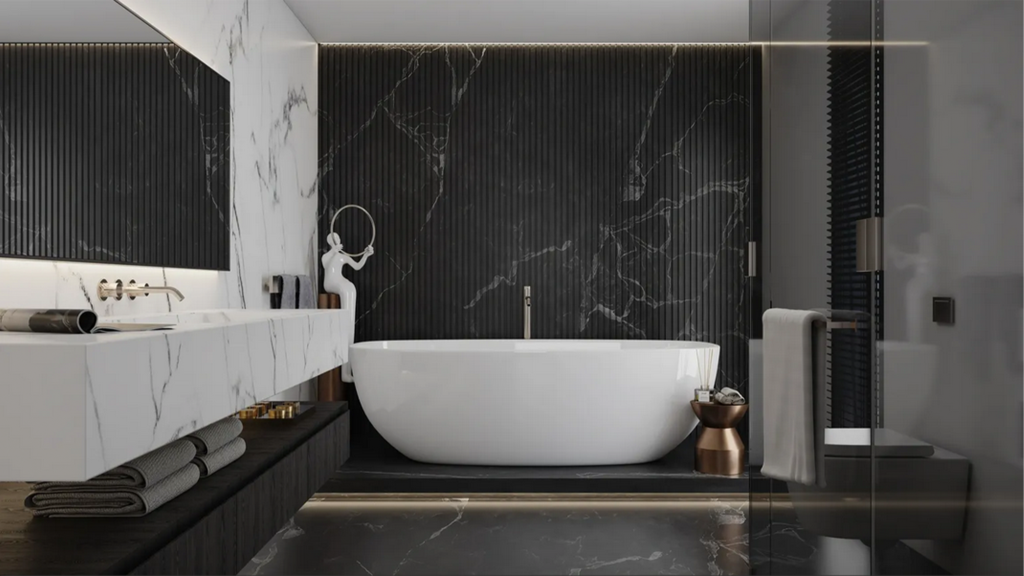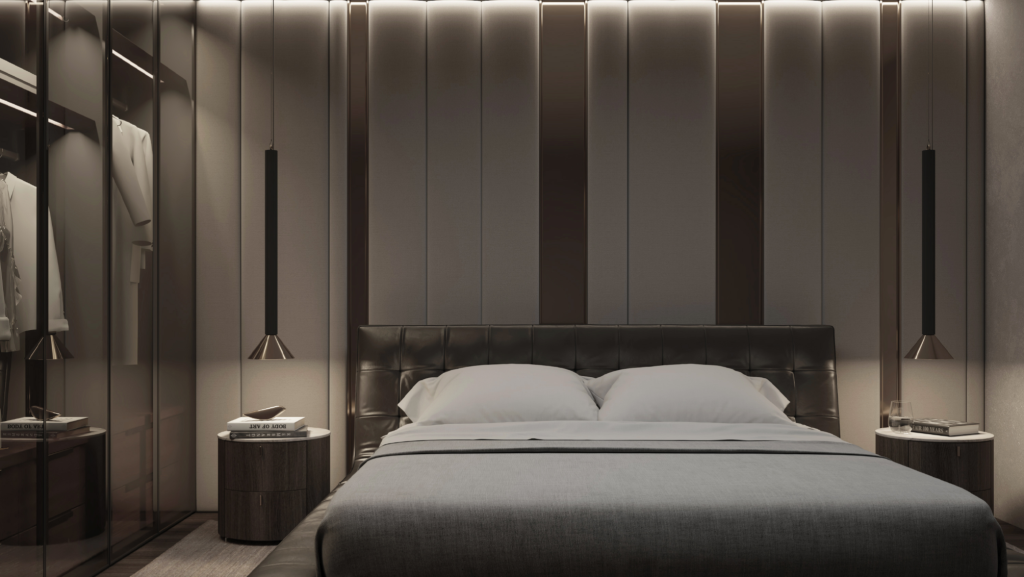The decoration of a space, especially our home where we spend a significant part of our daily lives, should reflect our personality, taste, aesthetics, and create an atmosphere that feels truly familiar to us.
And if this description sounds ideal but at the same time seems difficult to achieve since it requires knowledge, cost, research, and time that you may not have, there is a solution. The contribution of a professional interior designer, who will “hold your hand” troughout the process, until the desired outcome for you is achieved.
Interior Designer and co-founder of In Detail Studio, Deli Ioannou, answers relevant questions that might also be your own queries, explaining, among other things, how to choose the right professional for you, how they can assist you, whilst also commenting on the current trends prevailing in interior design today.
By Nicola Karatzia
Translation by Stephie Karagiorge
Photographic material: In Detail Studio
Is it easier to remodel an existing space by changing the decoration or to take over a new one, in which no one has intervened “aesthetically” before?
The difficulty with an existing space lies in the issues that may be encountered with pre-existing amenities and services. For example, in the case of a residence, the air conditioning/heating may not align aesthetically or technologically with modern times, meaning that they may have to be replaced – if the client agrees, of course. However, this has the downside of adding additional costs to the renovation budget.
Consequently, this affects both the design and the decoration since any solutions must be taken into account and harmonized with the desired aesthetic and functional outcome we want.
On the contrary, in a new building, design can precede any study – mechanical or electrical – integrating in the best possible way all the amenities of the house in its interior design.
At what point in the construction of a residence is it wise for the designer to “intervene” and provide their services?
I believe that the designer should be part of the “team” of consultants from the beginning so that, always in collaboration with the respective architect, they can achieve the ideal final result for the client.
The initial design of the “shell” of a residence directly affects the interior spaces, functionality, and layout, factors that are interrelated with the future daily life and needs of the owner. It is important that the client expresses their wishes and needs from the outset, helping the architect and the designer to understand and incorporate them into the design. This would also help avoid any potential errors and omissions that could arise and might necessitate future corrective changes.
In what percentage should the owner’s opinion and taste prevail, and in what percentage should the professional designer’s opinion prevail, in order to achieve the best possible result? Should the opinion of one party prevail?
I believe that a professional should listen to and respect the client’s opinion and taste since the client is ultimately the owner and user of the space. However, this should also apply the other way around. Once the client decides to hire a professional to assist them with their expertise, they must be receptive to new suggestions and ideas. The designer has the ability to anticipate potential issues that may arise, while at the same time, they have a more complete, overall view of the project in terms of design, materials, and color palette that will arise through the design that they will prepare.
There is an impression that an interior designer significantly increases the cost of a project, by usually choosing expensive pieces for decoration. Is this true, or is the opposite happening?
Partially, this is true. However, the reason behind it clearly focuses on the experience and knowledge of the designer concerning new materials and technologies. For example, the client may have specific ideas in mind for their home, while the designer may suggest more specialized and technologically advanced solutions that are more compatible with the desired outcome but also more expensive. That’s precisely why I believe that a professional should take into account the client’s budget and the overall project cost, in order to propose solutions that fall within the desired total budget.
How can you choose the right interior designer for you? What factors should you consider before making the final decision on the professional you will work with?
It all comes down to communication. I believe that a client should conduct research before making their final decision, and in fact, it would be beneficial to arrange some initial meetings with the predominant interior designers whose work stood out. Through one-on-one discussions with them, the client can assess whether there is good communication and agreement of opinions between them. Additionally, frequently, the client’s budget plays a significant role in selecting a professional to provide their services. It is therefore suggested that the architectural plans – if available – are sent at an early stage to obtain cost estimates from the designers for their services.
Is it better before the first meeting with a designer – potential collaborator -, to have done research in order to have a first opinion on what you like and what you do not like, or even to provide photographic material on your first appointment?
I believe that before an appointment with a professional interior designer, it is necessary to have done research – for example, through the internet – to discover what we like and what we don’t. Even providing photographic material is an excellent way to communicate our needs and desires to the interior designer.
In this way, the interior designer will be able to understand the style of the person they are working with, the color palettes they like and even the material that could be used in their space and consequently, to make relevant suggestions, always having in mind the satisfaction of the customer.
Are there fashion trends that are followed over time in interior design, and if so, how often do they change and what trends are prevalent at the moment?
Certainly, there are fashion trends, although personally, I don’t like to use that term. Any field related to design should evolve and align with the era and technology. I believe that in the field of interior design, what influences these “fashion trends” is the modern way of life and how the user of a space can be facilitated in their daily activities. For example, one could say that the new trend revolves around environmental sustainability and sustainable development, and the use of materials and technologies that have low to no maintenance costs.
If you were called upon to make a decision regarding a client’s home or to advise them, and you had to prioritize between functionality and aesthetics, where would you lean?
This is the constant dilemma that exists in every solution that we propose. In the event that a client has difficulty making a decision, we always give them the option to choose between functionality and design. We must explain the pros and cons of each possible solution, analyzing the extent to which it affects functionality and aesthetics, respectively. It is the owner who will ultimately make the final decision. As professionals, what we can help with, through our proposals, is to find the best possible solution for the client based on their needs.

How many designs/proposals can (or is considered reasonable) someone ask from an interior designer before making final decisions?
Each customer is different. There is no specific number of designs or proposals that I could say is reasonable before making final decisions. We understand that each individual is unique and has different needs, and we must respect that. If we see that a client is having difficulty making any decisions, we will try to guide them, explain what they need in order to address any questions they may have, so that we can help them arrive at the best possible solution.
In an architecturally classic house, could modern design be suitable, or would it detract from its “identity”?
For me personally, this might be one of my favorite combinations. The “fusion” of different eras and styles is what makes the result so interesting. I believe that for an architect or an interior designer, something like this is a pleasant challenge that we don’t encounter very often, as in recent years – especially in renovations – there is a preference for more minimalist lines and generally more modern design.

Do you feel that the rapid evolution of technology, and in particular artificial intelligence, could in time replace through specialized programs, the services provided by your profession, or on the contrary, could in combination, be a significant tool in your hands?
Technology is indeed constantly evolving, and we always try to keep up and incorporate it into our designs and proposed services, whose implementation would improve the daily lives of the owners of a space.
Regarding artificial intelligence, I believe it is still early to fully replace the role of an interior designer, as its practical implementation may be challenging. I think that achieving the desired result still requires communication between the client and the designer on a more human level, with a spirit of understanding the client’s needs and desires.
Furthermore, there is the significant issue of on-site supervision during the construction process, where direct and crucial decisions are often needed to address any potential problems that may arise. In conclusion, at this stage, I would say that artificial intelligence will simply be an important tool for a company or an office.

